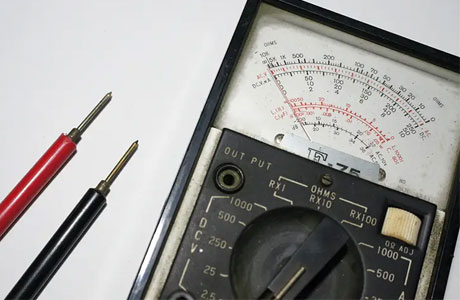What Is The Highest Voltage A Multimeter Can Measure?
Key Takeaway
The highest voltage a multimeter can measure depends on its design and specifications. Most standard multimeters can measure up to 400-600 volts. High-end models can handle up to 1,000 volts. If you need to measure voltages beyond this range, you’ll require a specialized high-voltage instrument.
Always check your multimeter’s manual for its maximum voltage rating to avoid damage or safety hazards. If the voltage exceeds the selected range, the multimeter typically displays “1” or an overload symbol. In such cases, adjust the dial to a higher range. Never attempt to measure voltages beyond the multimeter’s capacity, as it can lead to failure or personal injury. Use tools rated for high voltage when necessary.
Understanding Voltage Ratings on Multimeters
Voltage ratings on multimeters define the maximum voltage they can measure safely without damaging the device or endangering the user.
Key Terms:
Max Voltage Rating: Indicates the highest voltage a multimeter can handle. Common ratings are 600V, 1000V, or more for advanced models.
Category Ratings (CAT): Denotes the type of electrical environment the multimeter is designed for:
CAT I: For low-energy circuits like appliances.
CAT II: For standard home wiring and outlets.
CAT III: For industrial circuits, including distribution panels.
CAT IV: For high-energy systems like utility connections.
Example:
A multimeter rated at 1000V CAT III is suitable for measuring up to 1000 volts in industrial environments but may not be appropriate for CAT IV applications.
Understanding these ratings ensures you select a multimeter suitable for your specific needs and protects you from potential hazards.

Safety Limits for Measuring High Voltage
While multimeters are designed for safety, exceeding their voltage limits can lead to catastrophic failure, including electric shock or equipment damage.
Risks of Exceeding Voltage Limits:
Internal Damage: Overvoltage can destroy sensitive components, such as resistors or capacitors, inside the multimeter.
Electric Shock: High voltage can arc through the multimeter’s insulation, posing a direct threat to the user.
Inaccurate Readings: A multimeter pushed beyond its limits may display incorrect values, leading to faulty diagnostics.
Built-In Protections:
Overload Protection: Many modern multimeters include features that prevent damage from brief overvoltage.
Fuses: Internal fuses blow to disconnect the circuit if current or voltage exceeds the device’s capacity.
Practical Tip:
Never assume your multimeter can handle all scenarios. Always verify its maximum voltage and category rating before testing high-energy systems.
How to Determine Your Multimeter’s Maximum Voltage Capacity
Knowing your multimeter’s limits ensures safe operation and accurate measurements.
Steps to Identify Voltage Capacity:
Check the Label: Look for voltage and category ratings printed on the multimeter.
Read the Manual: The user guide specifies maximum limits and safety instructions for the device.
Inspect Probe Ratings: Ensure the probes are rated for the same or higher voltage as the multimeter.
Test on a Known Source: Confirm the multimeter works correctly within its rated capacity by testing it on a safe, known voltage.
Example:
If your multimeter is rated for 600V CAT II, it’s safe for measuring outlets but not suitable for industrial panels or transformers.
Regularly verifying your device’s ratings prevents errors and ensures safety during high-voltage measurements.
Precautions for Measuring High-Voltage Systems
High-voltage systems require careful handling and strict adherence to safety protocols to minimize risks.
Essential Precautions:
Wear Protective Gear: Insulated gloves and safety glasses protect against accidental contact and arcs.
Use CAT-Rated Multimeters: Match the device’s category to the system you’re testing (e.g., CAT IV for utility connections).
Verify Connections: Securely connect probes to prevent accidental disconnections or arcs.
One-Hand Rule: Keep one hand away from the circuit to reduce the risk of completing a path for current.
Common Errors to Avoid:
Measuring voltage in the wrong mode (e.g., resistance mode).
Using damaged probes or connectors.
Standing on conductive surfaces during testing.
By following these precautions, you can safely measure high-voltage systems without endangering yourself or your equipment.
Alternatives for Measuring Extremely High Voltages
For voltages exceeding standard multimeter limits, specialized tools and techniques are necessary.
Alternatives to Standard Multimeters:
High-Voltage Probes: Attachments that step down voltage to a measurable range for standard multimeters.
Insulation Testers: Designed specifically for high-voltage applications, such as transformers or industrial systems.
Voltage Dividers: Circuit setups that safely divide high voltages into manageable levels.
Oscilloscopes: For analyzing high-voltage waveforms with precision.
Example:
When working with utility lines, a high-voltage probe rated for 15kV can safely measure the system without endangering the operator or damaging the equipment.
Using the right tools for extreme voltages ensures accurate measurements and protects both the user and the equipment.
Conclusion
Understanding the maximum voltage a multimeter can measure is vital for both safety and efficiency. By familiarizing yourself with voltage ratings, category classifications, and proper precautions, you can confidently handle high-voltage systems without unnecessary risks.
For tasks involving extremely high voltages, consider using specialized tools designed for such applications. Regularly testing and verifying your multimeter’s capabilities ensures accurate results and prolongs the device’s lifespan. For new engineers, mastering these practices is a key step in developing a safe and effective approach to electrical diagnostics.

